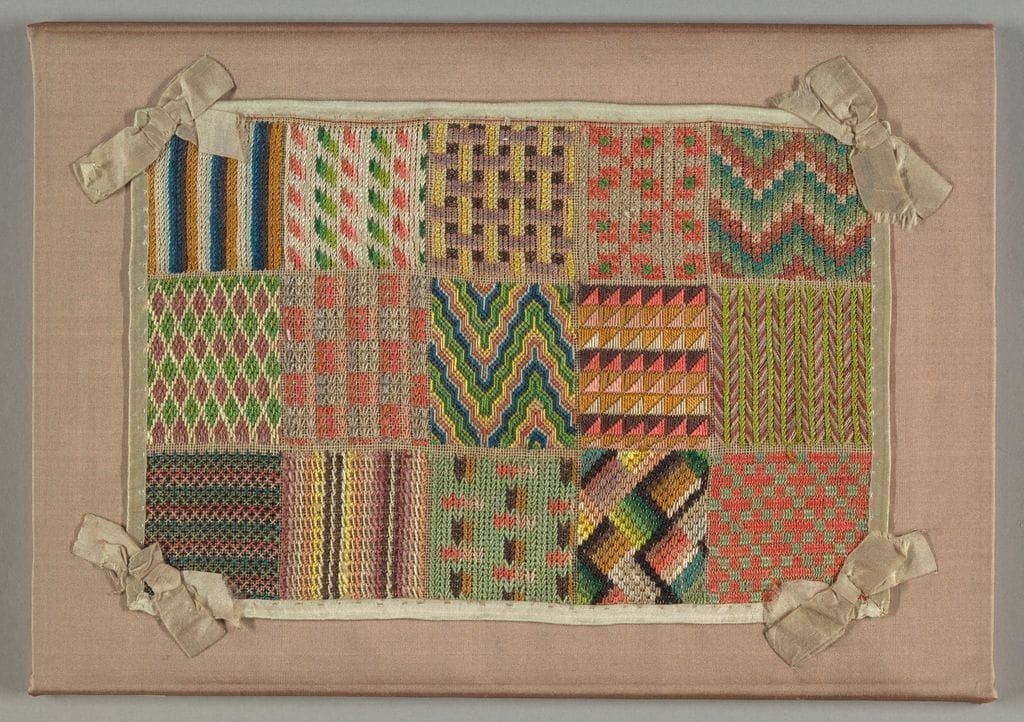14 Sep Cross-Stitch, A Gorgeous Embroidery developed from ‘X’ Stitches

Cross-Stitch – The inspiration for this article came from our cross-stitch expert Shobha, who joined as our first full-time cross-stitch artisan in June 2021. Shobha has been practicing this craft for the past 17 years. When she was in her twenties, she joined the training group led by father, Colombus, and has never looked back. The crafts were introduced to her village by father Colombus almost 70 years before. Father Columbus visited India through a missionary and trained women in more than 25 villages. Today, Shobha is one of the most skilled cross-stitch artisans in her village. Therefore, under her leadership, In a few months, we will begin a training program for elevating the skills of the other cross-stitch artisan women of her village, which by the way, will be a dream come true for Shobha, as she has told this to me many times on our calls. As for our calls – it is so adorable that her elder son Abhilash coordinates video calls between us, bridging our language barriers. Thanks to her embroidery skills- she provided for her kids’ education and future and now wants to help other women in her community do the same. How Noble!
Find more Embroideries in our Embroidery Series


These images are from the first piece of cross-stitch we did together. Watch the full video HERE. We can’t wait to explore more of this gorgeous technique. At the same time, in today’s article, I want to share more information and perspective on this technique. Read along.
The Beginning of the Embroidery
The use of cross-stitch as a sole stitch for embroidering a whole pattern is a very recent development; however, the use of ‘X’ as a stitch in embroidery samples is as old as the 6th or 7th century AD. As per the earliest recorded sources, cross-stitch embroidery flourished during the Tang dynasty in China (618-906 AD). Even today, many ethnic minorities in China practice and decorate with cross-stitch.
The opening of the silk roads played an essential role in carrying the know-how of the East to the Middle East and the West, including cross-stitch Embroidery. It is a belief that the Spanish Black Work embroidery was highly influenced by the cross-stitch.

The Practice of Sampler
A beautiful practice of creating samplers by early stitchers and embroiderers who did not have any other means to record inspirations and stitches included noting patterns and stitches on a narrow piece of fabric called a sampler. The sampler was a reference piece, which would become like a family asset, with great patterns, ideas, and stitches documented on a piece of expensive linen. The cross-stitch came into its own with the working of samplers.


During the 18th century, the samplers became more refined into stylized patterns embellished with a sole stitch like the cross-stitch to create the decoration pieces.




Cross-Stitch Technique
This technique uses an evenly woven fabric with visible and even squares. The diagonal stitches create an ‘X’ mark on each square using the same or various color threads. Thus the technique needs a lot of focus and discipline.


Cross-Stitch in Palestinian Embroidery
Although there are many cultures where this technique is loved and practiced for generations, what fascinated me was this embroidery is the most renowned of Palestinian embroidery techniques, known for its rich colors and texture and many traditional motifs that vary from one region to another, adorning the walls of houses in Jerusalem and cement block houses in refugee camps.



Cross-Stitch Today
As a time taking and detailed technique, cross-stitch is common among artists or high-end home decor designers. The linen cushions embellished with cross-stitch embroidery are a luxury decor item for tasteful, traditional, and expensive houses.


ABOUT THE AUTHOR
 Nidhi Garg Allen is an alumnus of Parsons School of Design and Adjunct Professor at the Fashion Institute of Technology. She is a technologist turned artisan entrepreneur and the founder and CEO of Marasim. Marasim based in NYC is committed to preserving artisanal textiles that make use of regional techniques without uprooting craftspeople from their native communities.
Nidhi Garg Allen is an alumnus of Parsons School of Design and Adjunct Professor at the Fashion Institute of Technology. She is a technologist turned artisan entrepreneur and the founder and CEO of Marasim. Marasim based in NYC is committed to preserving artisanal textiles that make use of regional techniques without uprooting craftspeople from their native communities.



No Comments